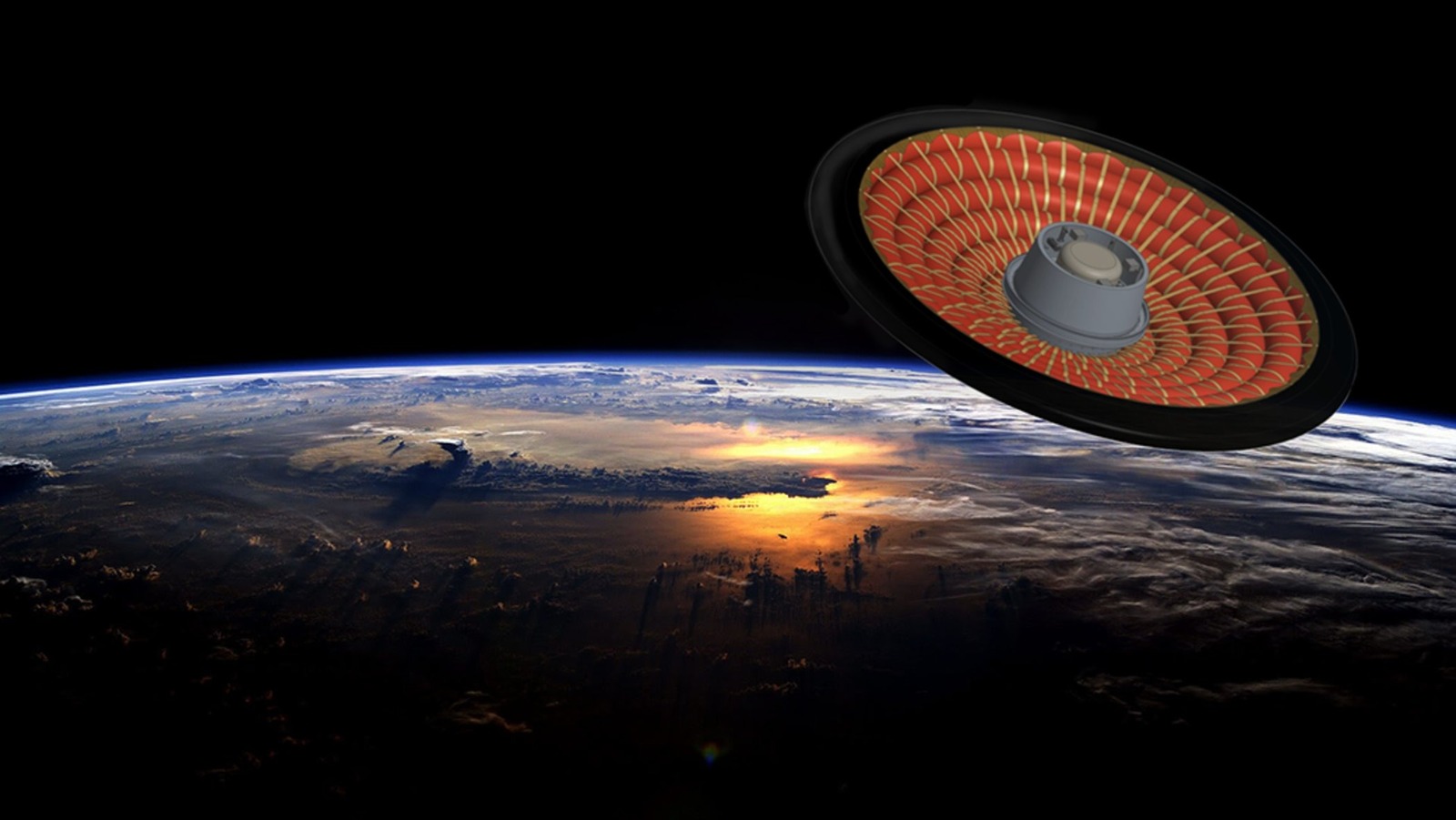
On November 10, 2022, a United Launch Alliance Atlas V rocket launched a NASA weather satellite called JPSS-2 for the National Oceanic and Atmospheric Administration. In addition to the satellite, the rocket was also carrying a test of the inflatable LOFTID heat shield. Instead of being rigid, the heat shield can travel in a compact form and then be deployed to a much larger size once it is in space.
The heat shield, also called an “aeroshell,” was deployed in space to travel through Earth’s atmosphere to see if it could survive re-entry. When it entered the atmosphere it was traveling at 18,000 miles per hour, and it slowed to under 80 miles per hour before its parachutes deployed. The heat shield then splashed down into the Pacific Ocean, from where it could be collected so that engineers could analyze it.
The results from the test are promising, according to NASA. “[E]arly indications show that the demonstration was successful,” NASA writes. “In addition to achieving its primary objective of surviving the intense dynamic pressure and heating of re-entry, it appears that the aft side of the heat shield – opposite LOFTID’s nose – was well protected from the re-entry environment.”
It will take several more months for complete testing to be performed, but the early results suggest that the system can be used to land heavier payloads. As well as landing rovers on Mars, such a heat shield could also be used on other planets like Venus or on moons like Titan, as well as being used on Earth.
Stay connected with us on social media platform for instant update click here to join our Twitter, & Facebook
We are now on Telegram. Click here to join our channel (@TechiUpdate) and stay updated with the latest Technology headlines.
For all the latest Gaming News Click Here
